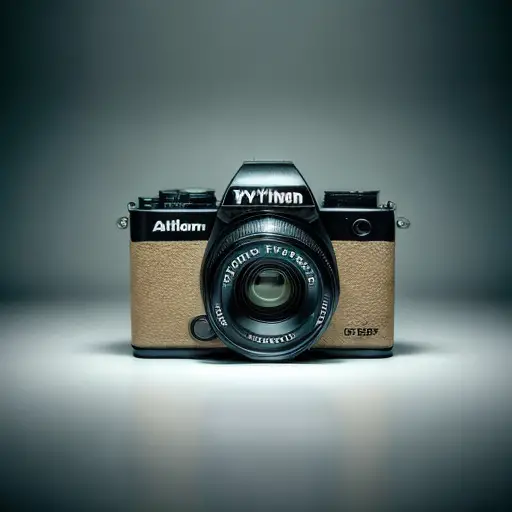Understanding Digital Camera Photos: Unveiling the Dimensions and Resolutions
Alright, picture this: you've just captured a breathtaking moment with your trusty digital camera, only to find out later that the photo looks more like a pixelated Picasso painting than a masterpiece. What gives? Well, my fellow shutterbugs, let's dive into the dimensions and resolutions of digital camera photos. These little snapshots of life come in all shapes and sizes, ranging from the petite passport photo to the grandiose poster-worthy print. Just like Goldilocks and her quest for the perfect porridge, finding the right dimensions is crucial. Too small, and your photo loses its charm; too big, and you'll be left with a file that could rival the size of Mount Everest. So, my friends, remember to strike that perfect balance when it comes to the dimensions and resolutions of your digital camera photos, and you'll be on your way to capturing moments that are picture-perfect, not pixel-perplexing.
Unraveling the Megapixel Myth: Debunking the Relationship between Size and Quality
An interesting fact about the size of digital camera photos is that they can vary significantly depending on the camera's resolution and settings. For example, a typical 12-megapixel camera can produce photos that are approximately 4000 pixels wide and 3000 pixels tall. This means that each photo contains a whopping 12 million pixels! To put it into perspective, if you were to print such a photo at a standard resolution of 300 dots per inch (dpi), it could be enlarged to about 13.3 inches by 10 inches without losing any quality. This highlights the incredible level of detail and clarity that digital cameras can capture, allowing us to preserve and relive our memories with stunning precision.
Let's debunk a myth that has been floating around the photography world like a stubborn rumor: the megapixel myth. Many believe that the more megapixels a camera has, the better the photo quality will be. But hold your horses, folks! It's time to unravel this misconception. You see, the size of a digital camera photo isn't solely determined by the number of megapixels. It's like judging a book by its cover - you can't judge the quality of a photo solely based on its size. Factors like sensor size, lens quality, and image processing play a significant role in capturing stunning shots. So, let's put this myth to rest and focus on the bigger picture - the artistry and skill behind the lens, rather than getting caught up in the megapixel madness.
From Pixels to Prints: Exploring the Impact of Resolution on Image Enlargements

Let's talk about the journey from pixels to prints and the impact of resolution on image enlargements. We've all been there - capturing a breathtaking moment with our digital cameras, only to realize later that we want to turn it into a stunning wall art piece. But here's the catch: enlarging a digital photo can sometimes lead to disappointment if the resolution isn't up to par.
Resolution, my friends, is the key to unlocking the potential of your digital camera photos. It determines the level of detail and sharpness in an image, and it's crucial when it comes to enlargements. You see, when you enlarge a photo, those tiny pixels start to stretch and become more noticeable. If the resolution is low, you'll end up with a pixelated mess that resembles a modern art experiment gone wrong.
So, how do we ensure our digital camera photos are ready for the big leagues? It all comes down to understanding the relationship between resolution and print size. The higher the resolution, the more pixels are packed into each inch of the image, resulting in a smoother and more detailed print. On the other hand, a low-resolution photo will struggle to maintain its quality when enlarged, leaving you with a disappointing outcome.
But fear not, my fellow photographers! There are ways to overcome this challenge. First and foremost, it's essential to shoot in the highest resolution your camera allows. This will give you more flexibility when it comes to enlargements. Additionally, investing in a camera with a larger sensor and higher megapixel count can significantly improve the resolution of your photos, making them more suitable for larger prints.
In the end, understanding the impact of resolution on image enlargements is crucial for turning your digital camera photos into stunning prints. So, next time you're capturing a moment, keep in mind the potential for enlargement and make sure your resolution is up to the task. Remember, it's not just about the pixels - it's about the quality and detail that can transform your photos into works of art.
Beyond Megapixels: Exploring the Factors Influencing the Size of Digital Camera Photos
A fun fact about the size of digital camera photos is that the largest digital photo ever taken was a whopping 1.5 billion pixels! This photo was captured by the European Space Agency's Gaia satellite and it contains an incredible amount of detail. To put it into perspective, if this photo were printed out, it would be as large as 600,000 high-definition television screens!
When it comes to the size of digital camera photos, it's important to look beyond just megapixels. While megapixels do play a role in determining the resolution and potential print size, there are other factors at play as well. The sensor size, for instance, can greatly impact the overall quality and size of the photo. A larger sensor allows for more light to be captured, resulting in sharper and more detailed images. Additionally, the lens quality and image processing algorithms also contribute to the final size and quality of the photo. So, while megapixels may grab the headlines, it's essential to consider the holistic combination of factors that influence the size and overall appeal of our digital camera photos.

